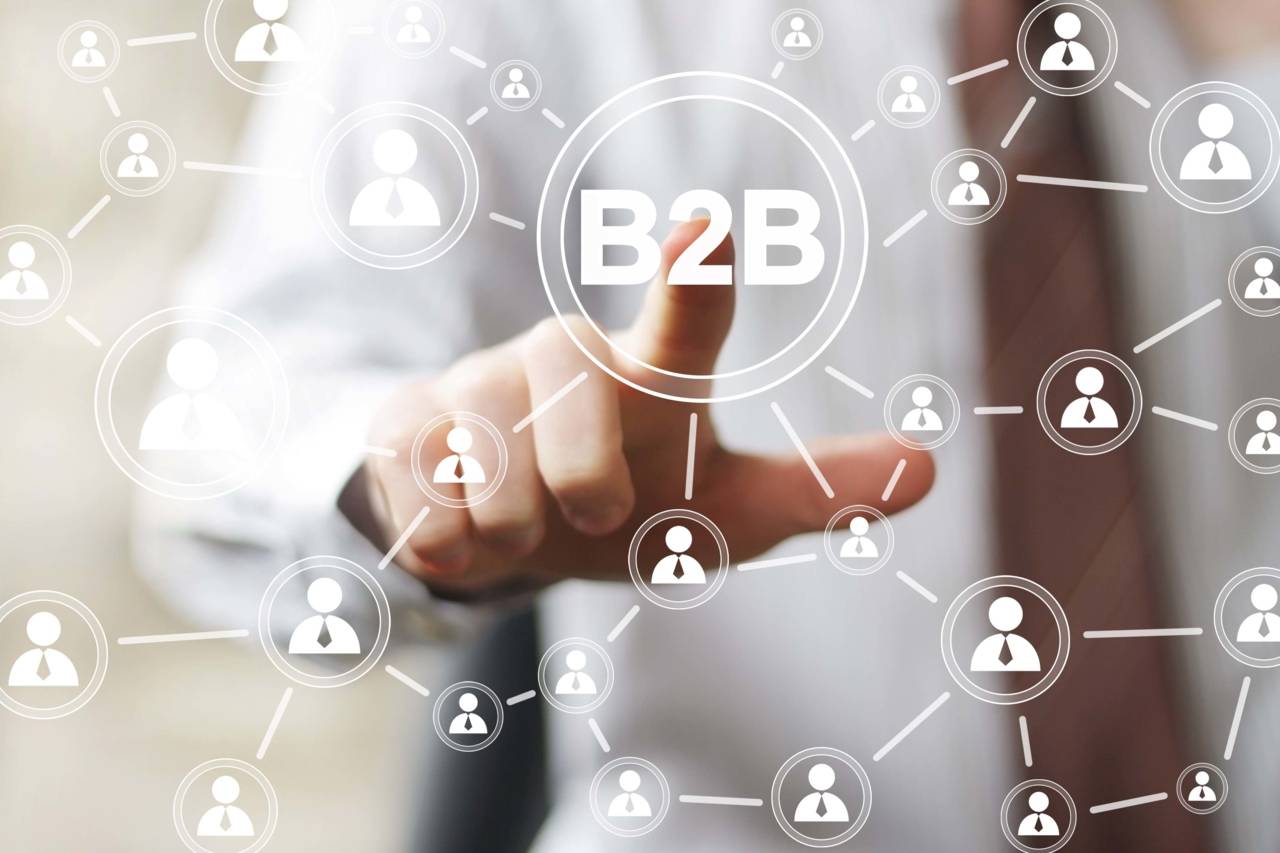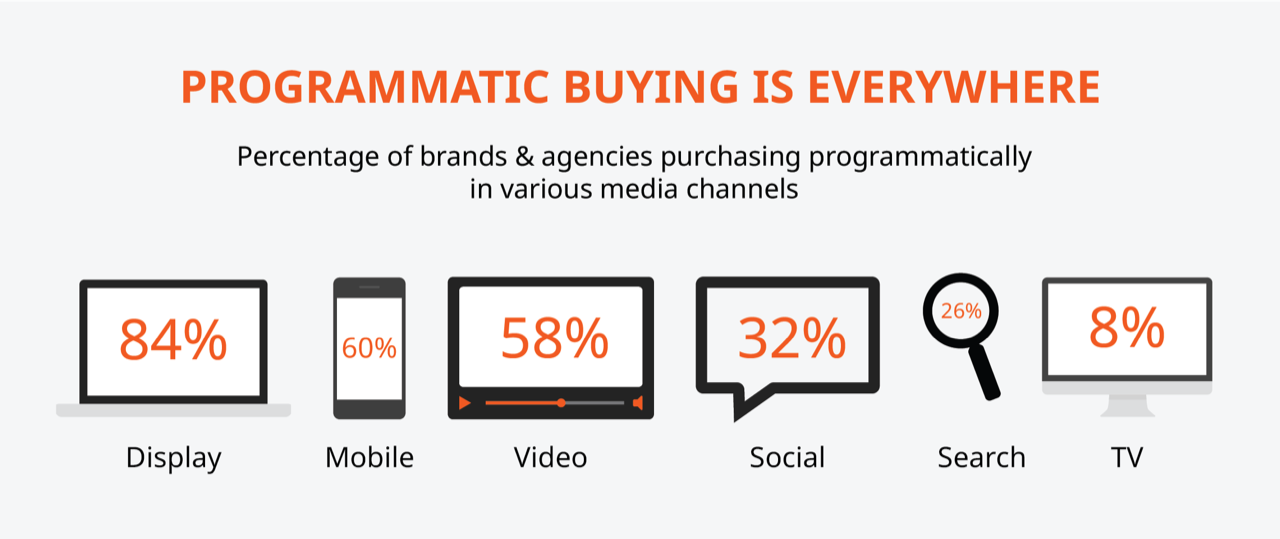Nine trends for B2B marketing in 2020 part 2

In part one of this blog I focused more on your brand and opportunities you can take advantage of with digital transformation. However, the biggest blind spot of B2B marketers is social media, especially for those who are not digital natives. The reason we include it as a trend (when it should already be a cornerstone of your marketing approach) is that you have to get on board with it.
B2B has always been slow to follow in the footsteps of B2C, but eventually, it adopted the marketing techniques that made retail e-commerce prosper. And adopted them wholesale, because they were equally effective in B2B. And so it will prove with social media.
Below are our remaining five B2B marketing trends - and must-haves - for 2020
5. Zero-click results
Google Featured Snippets have got SEO experts all excited. Featured Snippets respond to a search query by pulling content from a high-ranking page on the first search engine results page (SERP). This is great for users, but not so great for businesses that rely on visitors to at least take a peek at the rest of the first-page results. But no, the user you want to reach receives the answer to his or her question without having to visit a single website. Zero click.
Zero-click results are often generated in so-called long-tail queries, such as "Which marketing software is the best?". The key to success in On-SERP SEO is to optimize your content for users who enter open-ended questions instead of individual keywords or keyword phrases.
6. Focus on predictive analytics
Predictive analytics is not a new kid on the block, but it is increasingly smart and streetwise. Predictive analytics includes a variety of statistical techniques from data mining, predictive modelling and Machine Learning which together look at current and historic data to make predictions about the future. Its adaptation to B2B marketing involves the comparison and quantitative evaluation of two data sets, with the aim of developing a basis for decision-making based on statistics (and what the statistics tell you about the most and least profitable outcomes).
In the future, it will no longer be enough to base decisions solely on historic data. Successful marketing depends on the quality of the data, and not its quantity. So B2B marketers will have to become more rigorous in deciding what data they need, and in what ratios of quantity and quality, to reach decisions that add value for their customers.
7. Data transparency as the most important basis for decisions
Most of our interactions with the world are ruled by search engines, online retail giants and social media. We want that convenience but have now reached a tipping point where the way that businesses and government bodies handle our data matters (almost) as much.
Data breaches are never out of the news. In the past few months alone, we learned that sensitive customer data was stolen from well-known businesses such as Mastercard, Marriott and Citrix. Data protection guidelines, beefed up to regulate how organizations collect, process and store data, are not foolproof.
The European data directive better known as GDPR imposes massive penalties for data breaches and unwarranted use of customer and employee data - it's too soon to see if this will do the trick. In the meantime, many other countries are pushing through tough data protection laws. Organizations have to obey the law of course - and keep the trust of their customers. This is why data transparency is a good thing.
The customer is always right. So if they demand more control over their own data, businesses have no choice but to be transparent about customer data and hand back control of them to the rightful owner: their loyal customers.
8. Social media strategy is a must-have
This should no longer be a trend but a tried and tested marketing tool but, regrettably, many businesses have still not recognized the value of a carefully thought-out social media strategy.
Globally, there are some 3.5 billion social media users, an increase of 9% compared with the previous year. And social media continues to grow.
The most successful brands grasped this a few years ago and made social media an important part of their B2B marketing strategies. Brands active in B2B often overlook the importance of social media because B2B has complex and long sales cycles. But that doesn't mean that social media doesn't have its place in the marketing mix.
The key to a successful B2B social media strategy is to find the channel that your target audience is (mostly) on. More and more social channels are being developed, so it is very likely that there will be at least one channel that suits your audience and the niche in which you operate.
LinkedIn can be a good place to start for B2B marketers. There are over 590 million active professionals on LinkedIn. The platform has more than 60 million high-ranking influencers, 40 million decision-makers and 10.7 million opinion leaders - and those numbers will only grow.
B2B marketers should also take advantage of channels such as Instagram, Facebook, Twitter and Slideshare to stay relevant in today's market context.
Social media is the ideal channel in which to talk to customers on a more personal level; this means that B2B marketers can reach large segments of their target group at a comparatively low cost.
However, it is important to remember that the social media environment is dynamic - as Heraclitus reminded us in Part I of this blog [LINK]. In order to be successful in the long term, your social media marketing strategy must keep pace with all these changes and adapt.
9. Programmatic advertising is increasing
Programmatic advertising is the future of digital advertising. Google wants to move more of its digital marketing budget into programmatically traded campaigns, with a target of 60% by the end of the year. Forrester also predicts that a significant portion of all digital ad spend will go programmatic in the next few years.
However, to make the switch to programmatic advertising, B2B marketers need knowledge of the process as well as an openness to changing their current methods of buying ads. The infographic shows the proportion of brands and agencies that shop programmatically through the various media channels.
Programmatic advertising automates the tendering process based on analytical data. Since the process is leaner and less prone to error, it tends to reduce the overall cost of advertising. That being the case, it is hardly surprising that programmatic advertising is rapidly gaining acceptance, also in B2B.
If you are struggling with your B2B digital transformation efforts, why not reach out to us at to discuss your project. Feel free to download and read eZ's eBook on Digital Experience Platforms and the four considerations for creating exceptional customer experiences.
Considerations for Creating Rich Customer Experiences
DXP eBook
If you are struggling with your B2B digital transformation efforts, why not reach out to us to discuss your project. Feel free to download and read Ibexa's eBook on Digital Experience Platforms and the four considerations for creating exceptional customer experiences.


